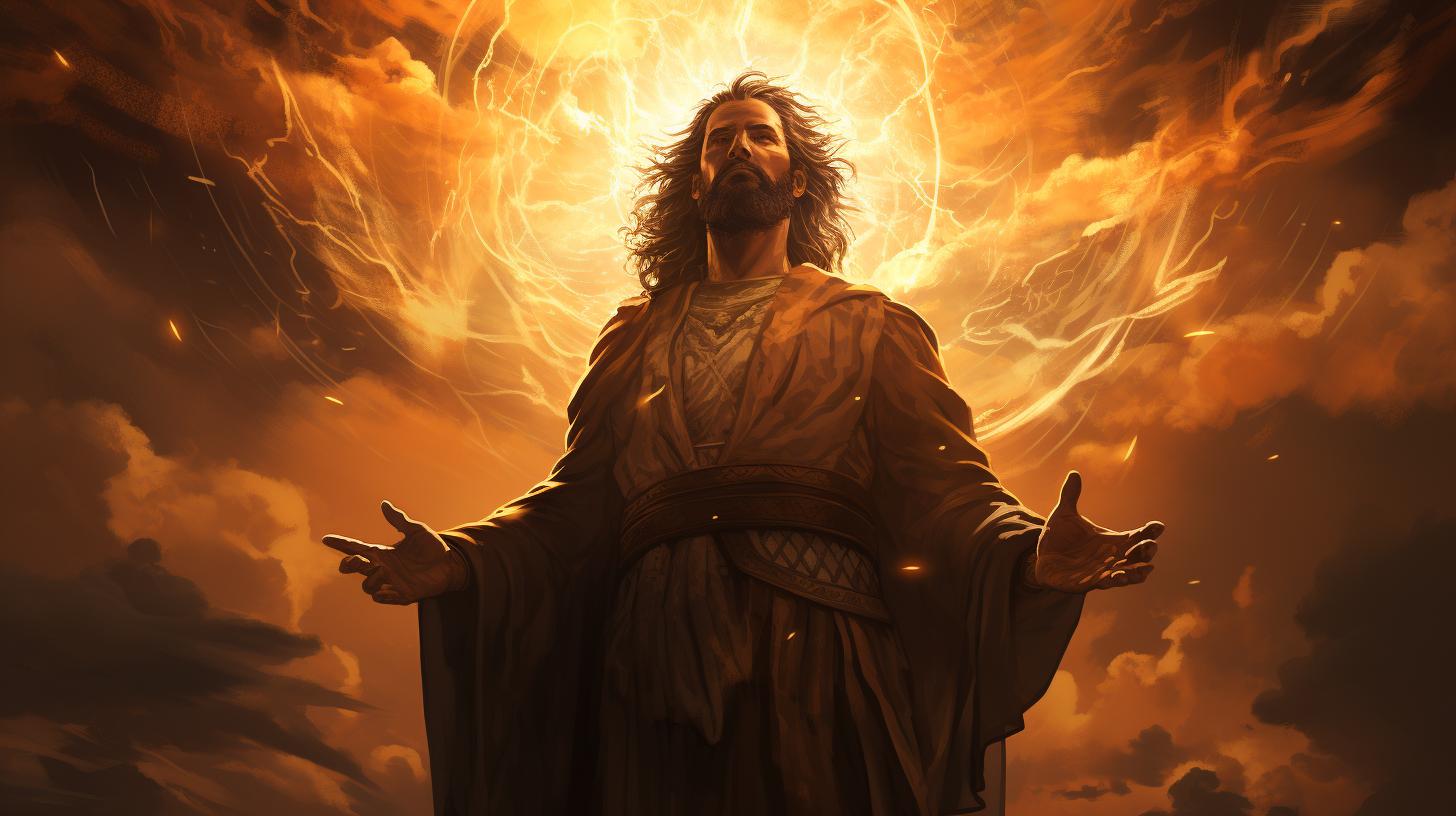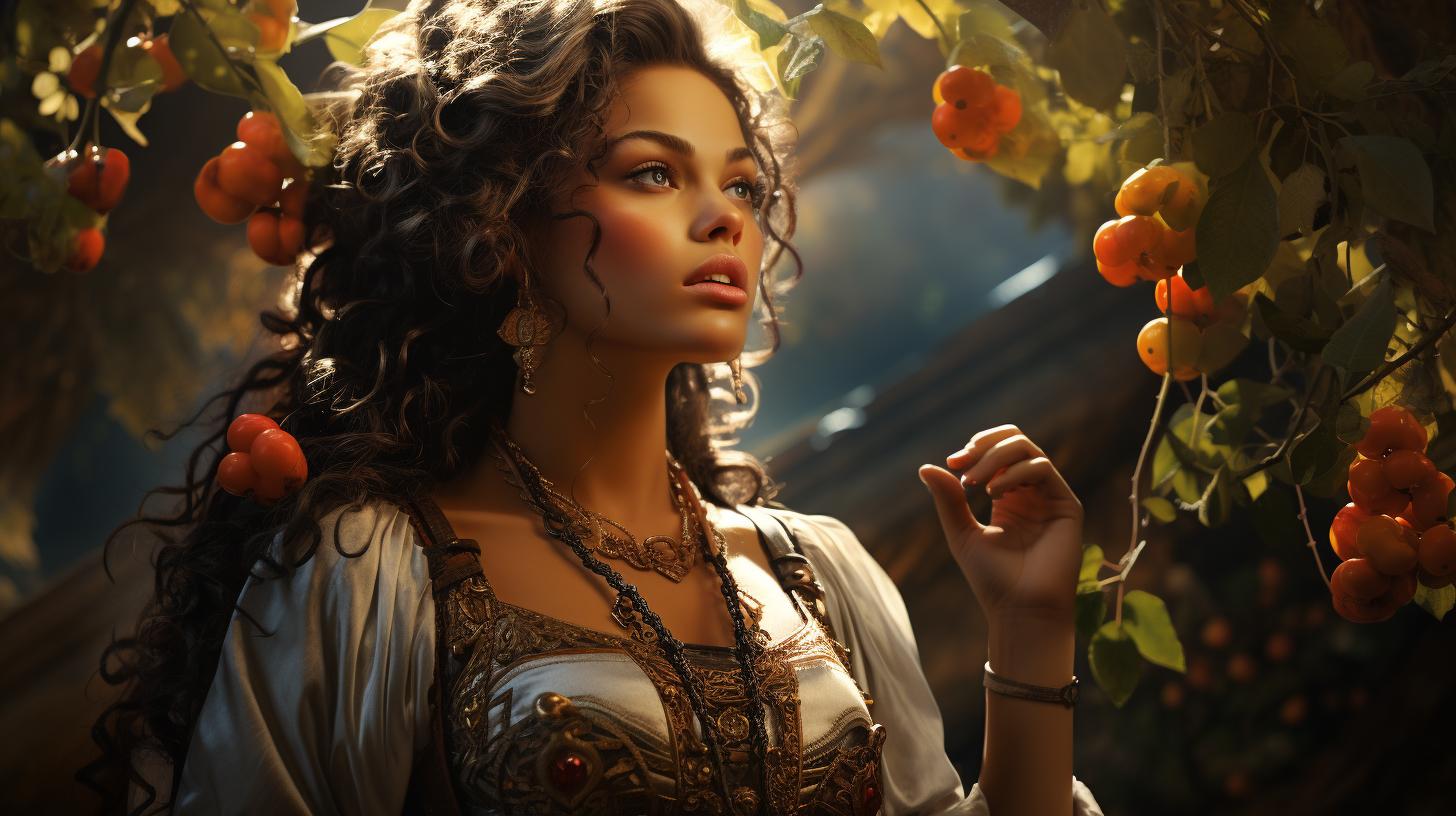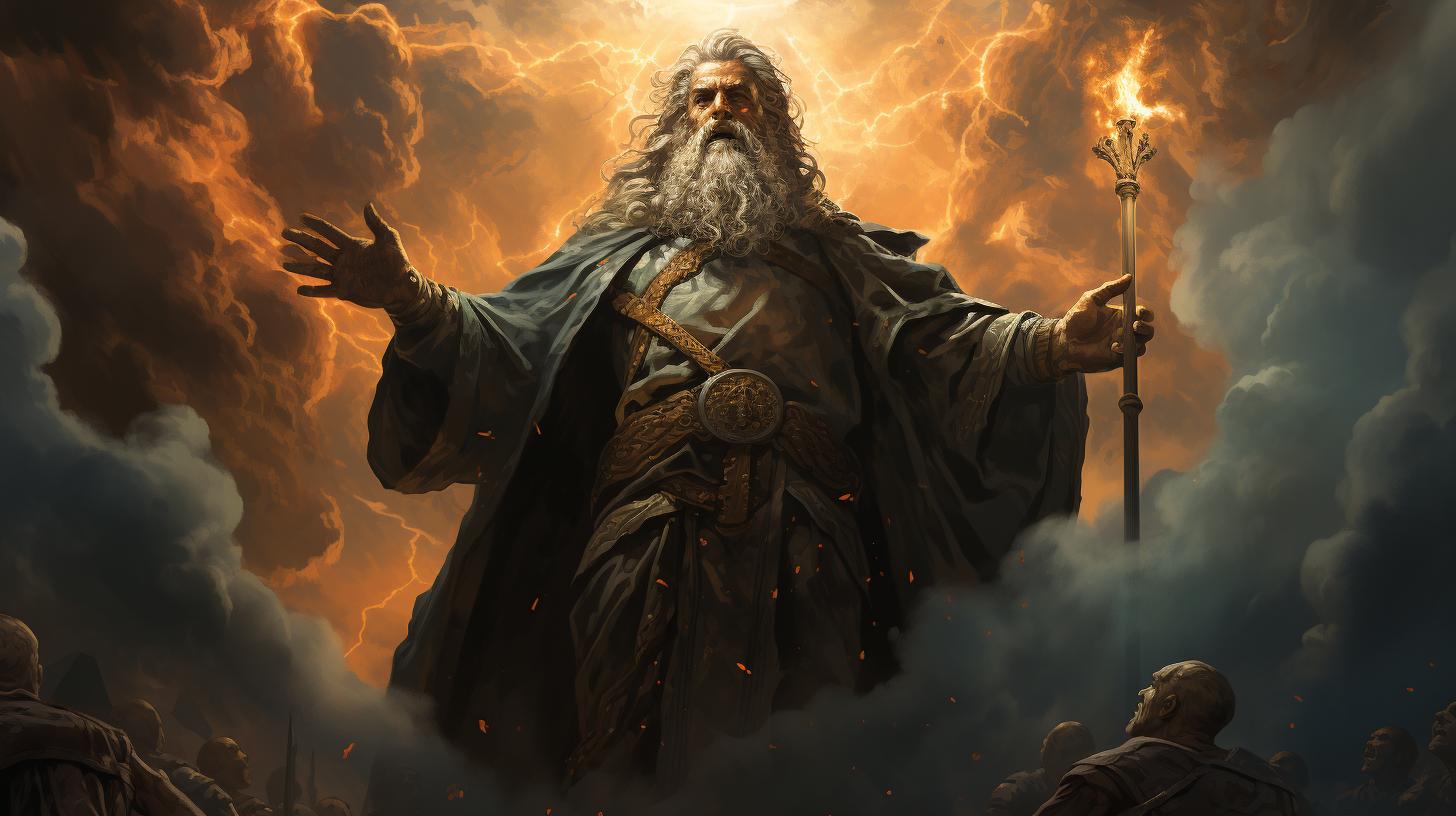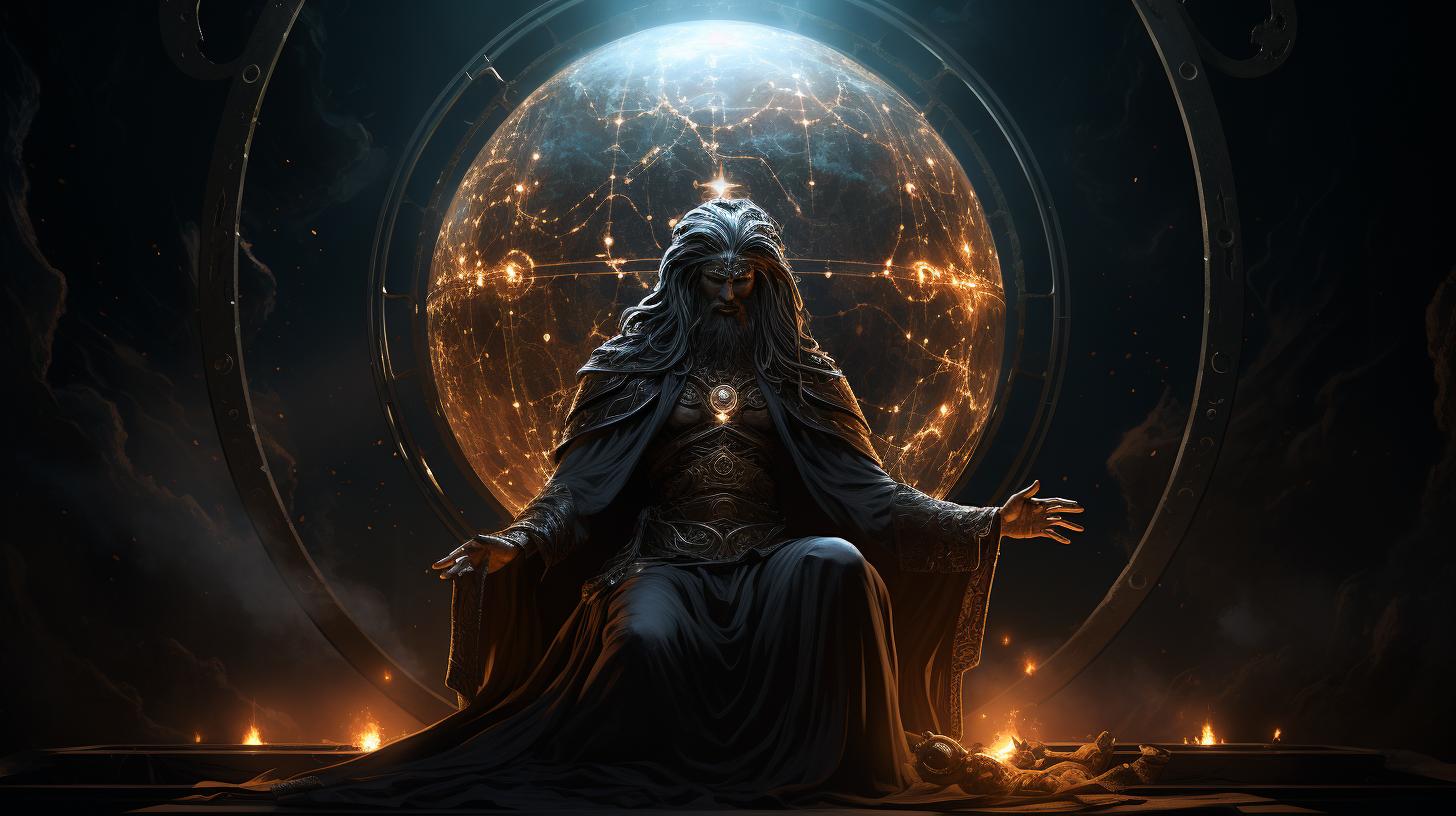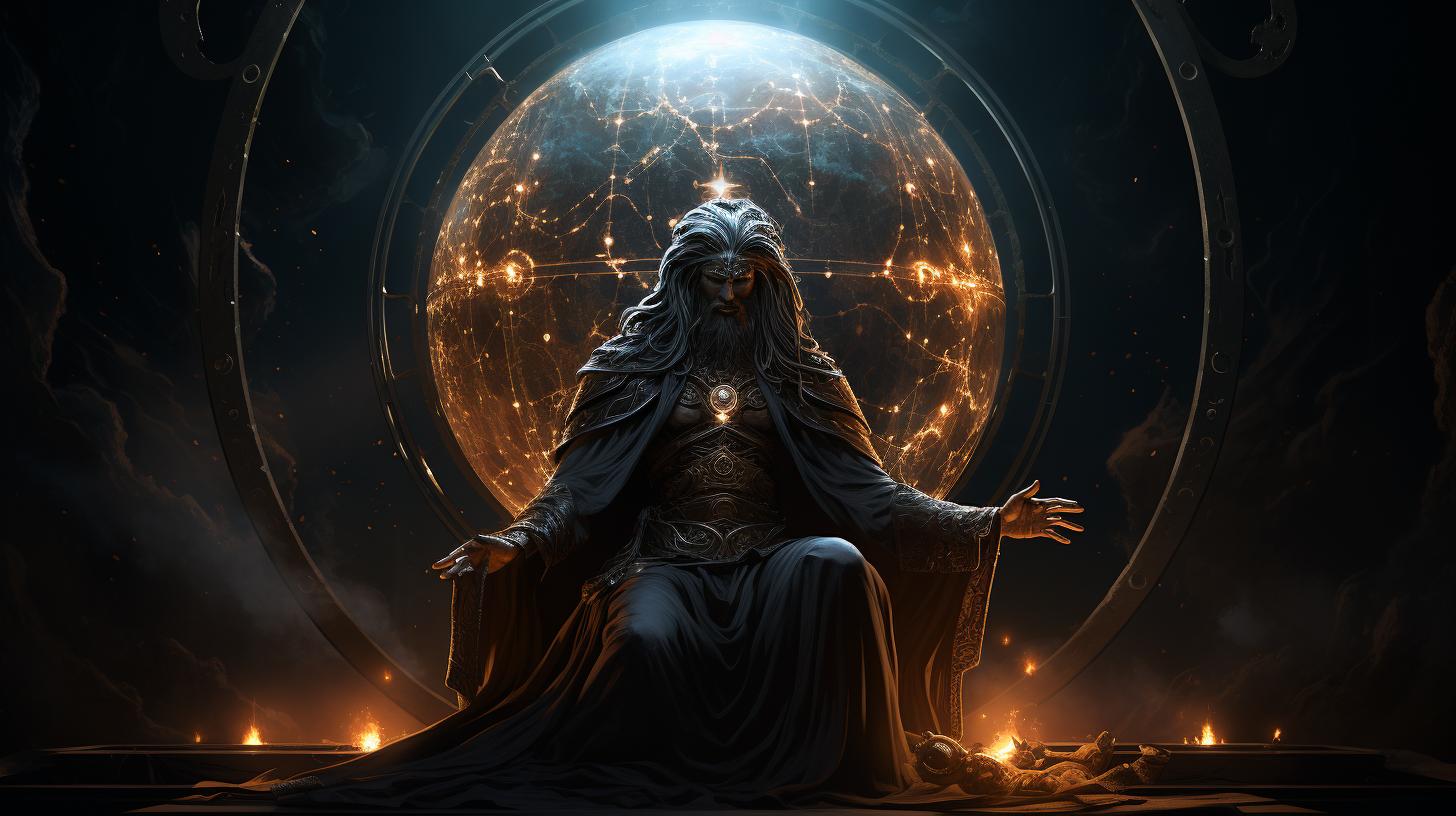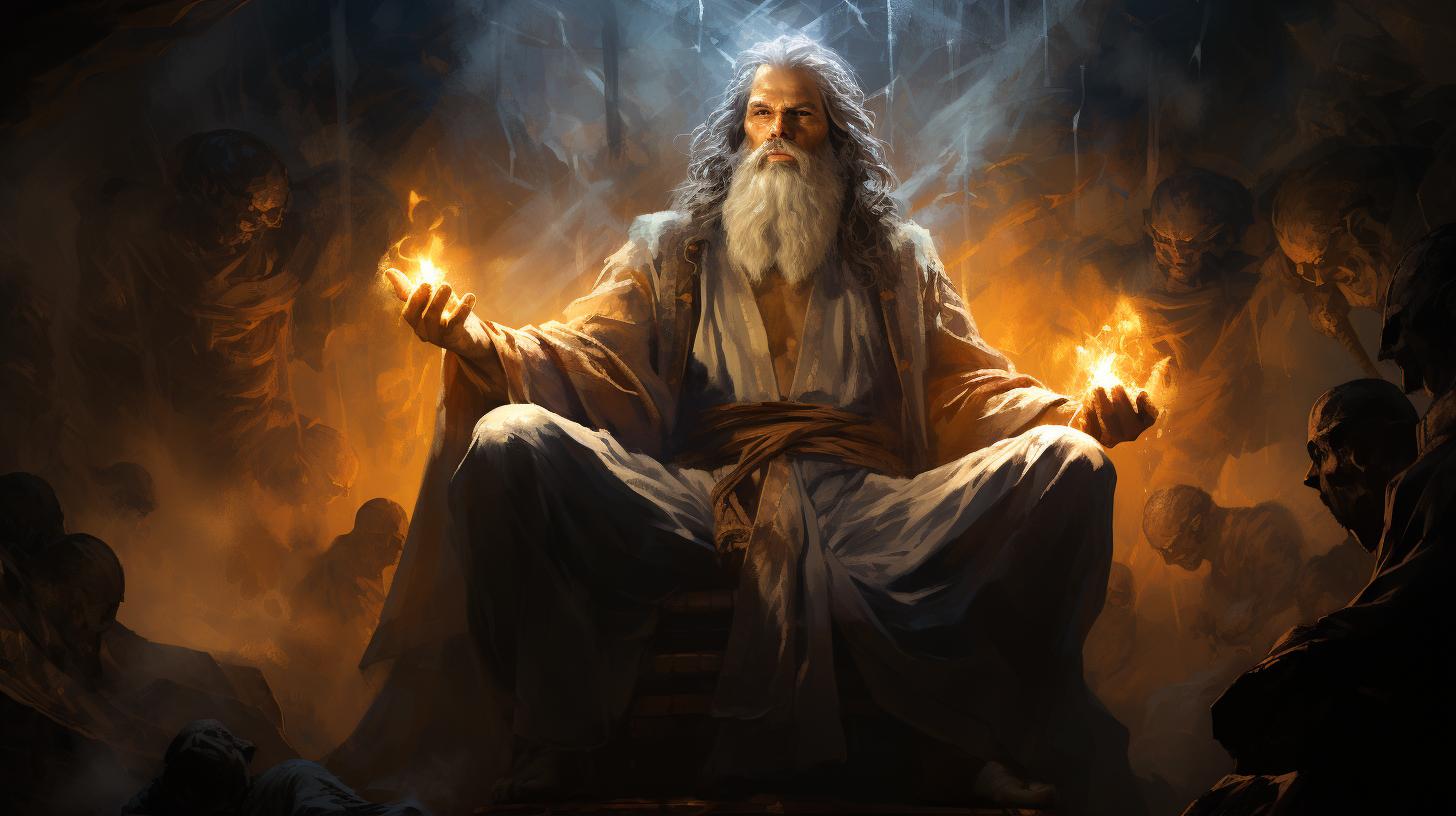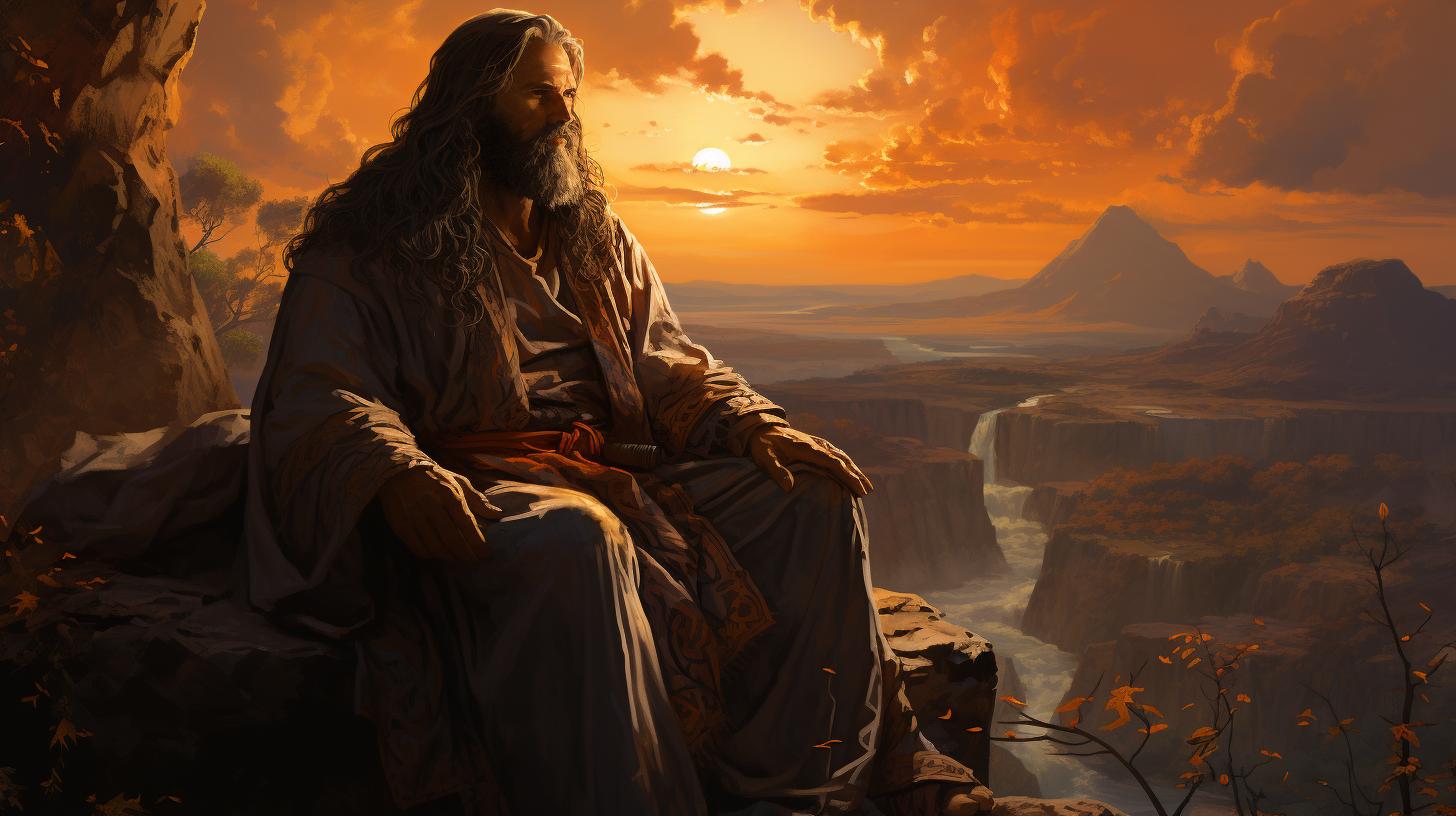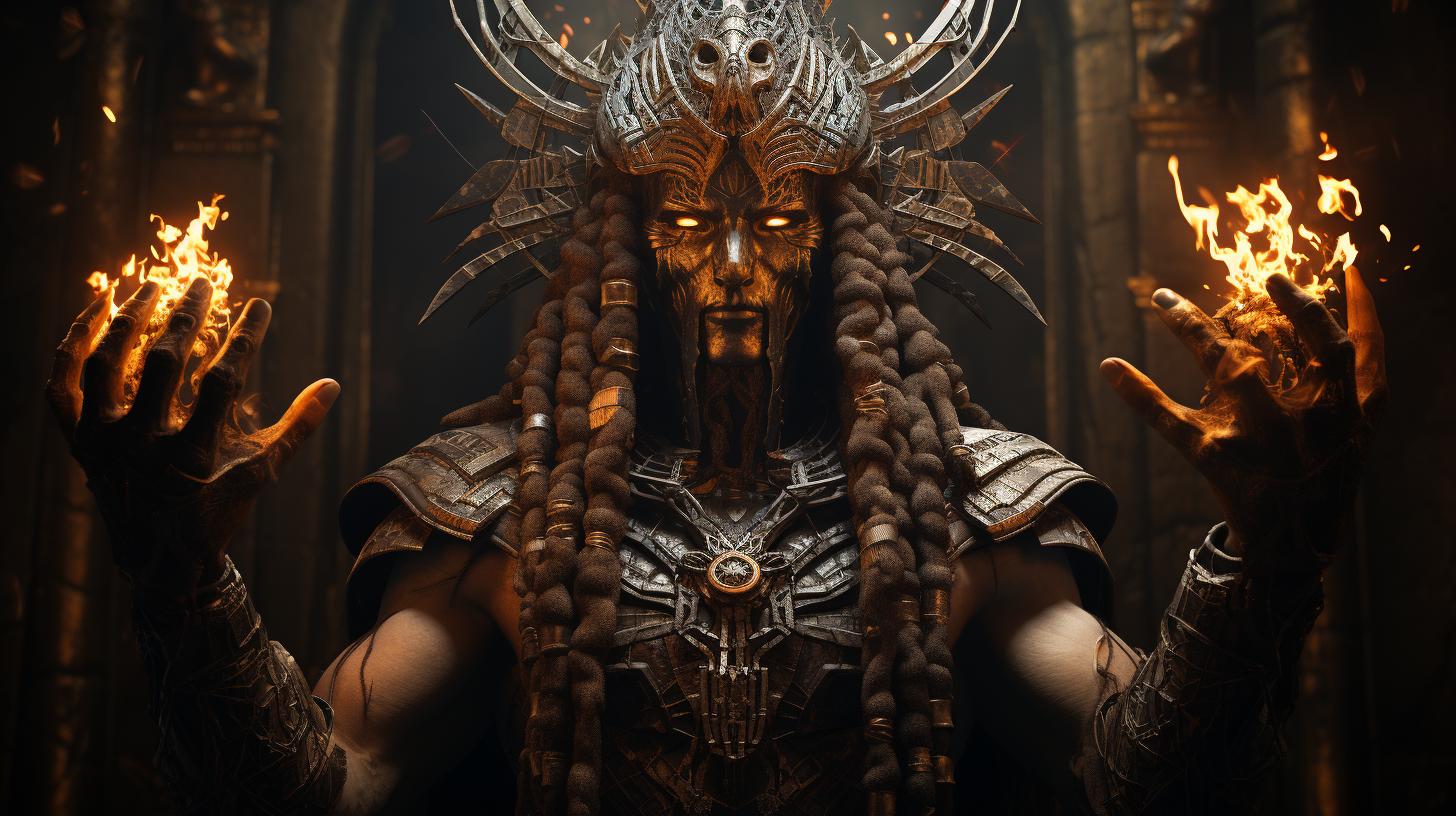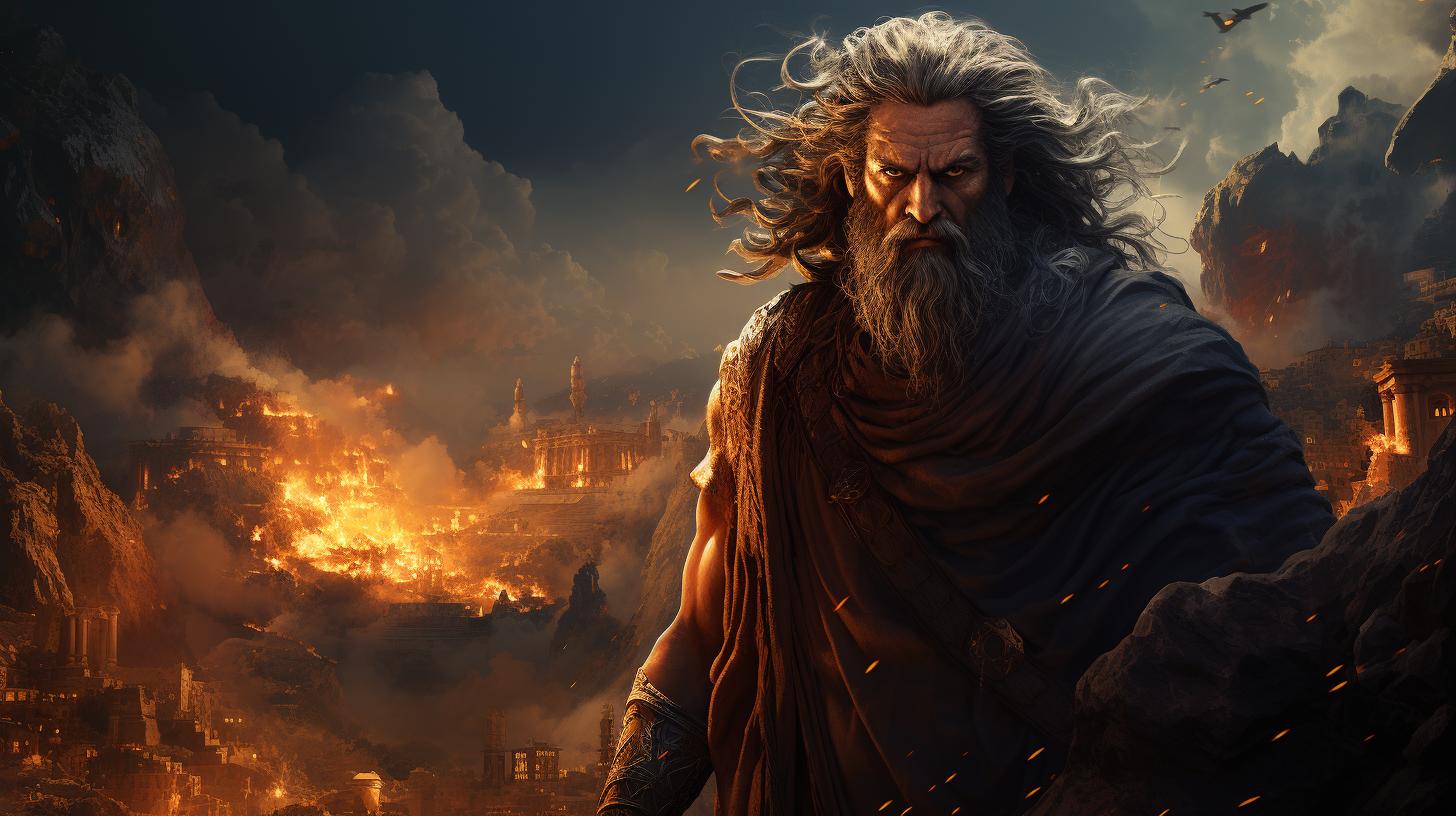Shahar god: Exploring the Ancient Canaanite Deity of Dawn
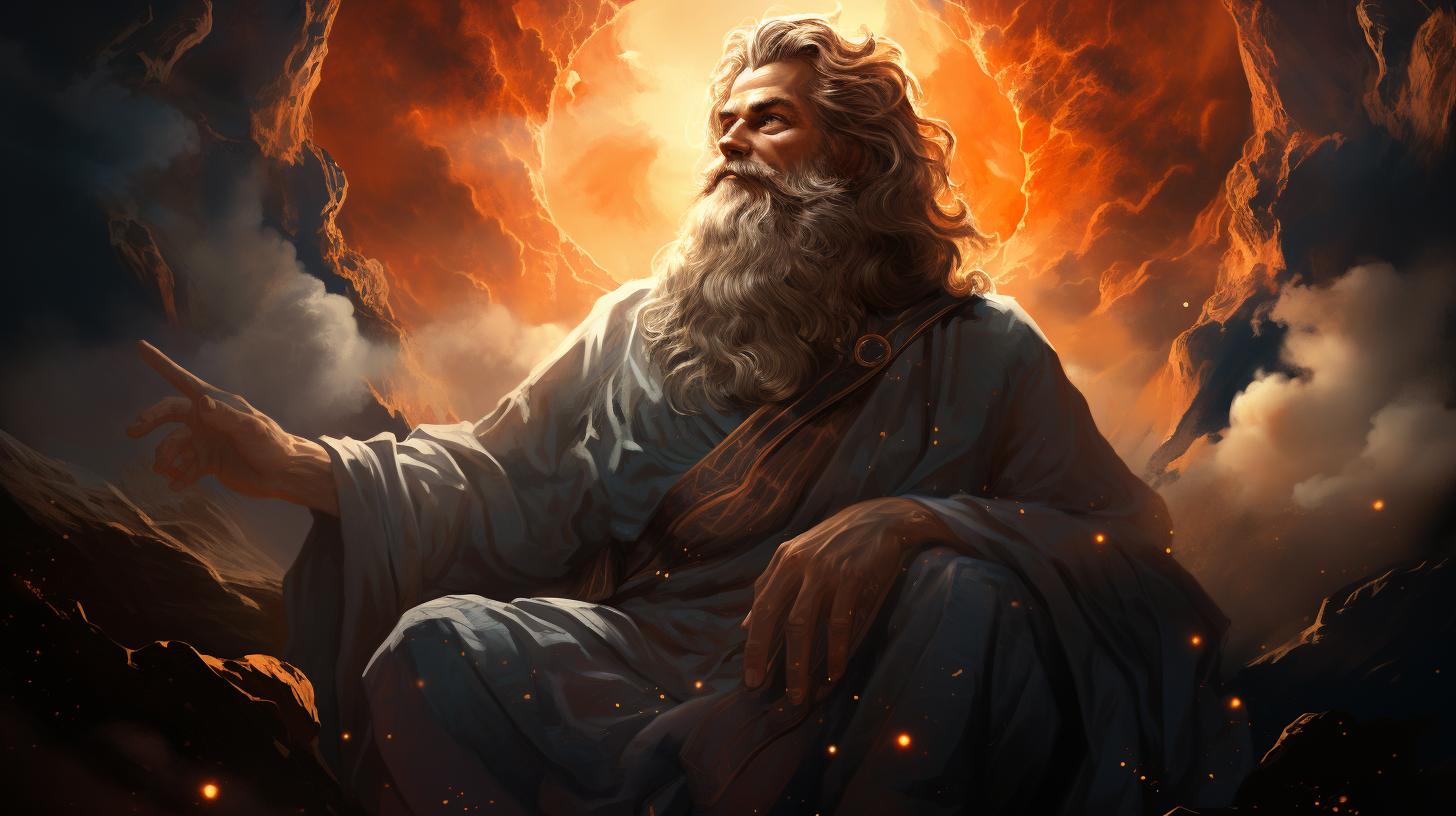
Shahar god, a prominent figure in Canaanite and Ugaritic mythology, is known as the deity of dawn. He is the son of El, the main god in the Canaanite pantheon, and has a twin brother named Shalim, who represents the dusk.
Together, they symbolize the temporal markers of the day cycle. This article explores Shahar’s mythological context, symbolism, mentions in Ugaritic texts, and the controversy surrounding the term ‘Shahar Haram’ in relation to Ramadan.
Gain insights into the beliefs and conception of time in ancient Canaanite culture.
Understanding the Mythological Context of Shahar god
Shahar god holds a significant position in Canaanite and Ugaritic mythology, representing the deity associated with the dawn. This section explores the broader mythological context surrounding Shahar and his role in the ancient Canaanite pantheon.
The Canaanite Pantheon and Shahar’s Position
Within the Canaanite pantheon, Shahar holds a prominent status as the son of El, the supreme god. El’s role as the main deity indicates Shahar’s importance within the hierarchy of the gods.
As the deity of the dawn, Shahar symbolizes the beginning of a new day and represents the cyclical nature of time.
Shahar and Shalim: The Twin Deities of Dawn and Dusk
Shahar’s significance in Canaanite mythology is further highlighted by his twin brother, Shalim, who embodies the deity of dusk.
Together, Shahar and Shalim represent the dual aspects of the temporal markers of day and night. The pairing of these twin deities reflects the conceptualization of the passage of time and the balance between light and darkness.
This section provides insights into the mythological context surrounding Shahar god, examining his position within the Canaanite pantheon and the symbolic significance of his relationship with his twin brother, Shalim. Understanding the role of Shahar in relation to other deities and the conception of time illuminates the rich mythology and beliefs of the ancient Canaanite culture.
Exploring the Symbolism of Shahar god
Shahar, the Canaanite god of morning, holds significant symbolism within Canaanite and Ugaritic mythology. This section delves into the various symbolic representations associated with Shahar, focusing on his role as the god of morning and the morning star, as well as his contribution to the temporal structure of the day.
Shahar as the God of Morning and the Morning Star
Shahar’s primary symbolism lies in his association with the morning and the celestial body known as the morning star. As the god of morning, Shahar represents the start of a new day, symbolizing renewal, hope, and the emergence of light after darkness.
The morning star, often identified as the planet Venus, further emphasizes Shahar’s connection to the celestial realm and his role as a guiding force at the beginning of each day.
Shahar’s Role in the Temporal Structure of the Day
In addition to his association with the morning, Shahar plays a crucial role in shaping the temporal structure of the day. Alongside his twin brother Shalim, the god of dusk, Shahar represents the transitions between day and night.
Together, they symbolize the cyclic nature of time, marking the boundaries between the dawn and the dusk. This symbolism highlights Shahar’s importance in defining the daily rhythms and cycles, reflecting the ancient Canaanite understanding of time.
Through his symbolism as the god of morning and the morning star, as well as his role in the temporal structure of the day, Shahar emerges as a significant deity in Canaanite and Ugaritic mythology.
His associations with renewal, light, and the celestial realm provide insights into the beliefs and perceptions of time in ancient Canaanite culture.
Shahar god in Ugaritic Texts and Inscriptions
The Ugaritic tablet inscriptions provide valuable insights into the presence and significance of Shahar god in the mythology of Canaan and Ugarit. These inscriptions, discovered during excavations at the palace of Ugarit in Ras Shamra, Syria, shed light on the worship and reverence for Shahar among the ancient Canaanite people.
Shahar’s Mention in Ugaritic Tablet Inscriptions
The Ugaritic tablet inscriptions reveal direct references to Shahar, the divine deity associated with the dawn. These inscriptions serve as written evidence of the Canaanite belief in Shahar’s role as the god of morning, symbolizing the beginning of each day.
The tablets depict Shahar’s significance in religious ceremonies and highlight the importance placed on acknowledging and honoring the dawn as a pivotal moment in the daily cycle. These inscriptions establish Shahar’s prominent place within the Canaanite pantheon and emphasize the deep-rooted devotion to the deity among the ancient Ugaritic civilization.
Insights from Archaeologist William Foxwell Albright
Renowned archaeologist William Foxwell Albright conducted extensive research on the Ugaritic tablet inscriptions, particularly focusing on the representation of Shahar god and his twin brother Shalim. Albright’s analysis deepened our understanding of the mythology surrounding Shahar, shedding light on his association with the planet Venus and his role as a celestial being.
Through Albright’s work, scholars have gained valuable insights into the complex interplay of religion, astronomy, and mythology in Canaanite and Ugaritic cultures.
Comparative Analysis: Shahar god and Similar Deities
Shahar god vs. Castor and Pollux in Classical Mythology
Shahar god and the twin deities of dawn and dusk, Shahar and Shalim, share a striking resemblance to the figures of Castor and Pollux in classical mythology. Just as Shahar and Shalim represent the markers of time, Castor and Pollux are associated with the dualities of day and night.
Their parallel roles in different mythologies highlight the universal fascination with celestial bodies and the cyclical nature of time.
Shahar’s Gender Identity as the Daughter of El
A unique aspect of Shahar’s identity is their association with El, the main Canaanite god, as both his son and daughter. To understand Shahar’s gender identity, we must look beyond the conventional gender binaries.
This fluidity expands our understanding of ancient gender constructs and challenges traditional notions of masculinity and femininity in mythology.
- Shahar’s role as both the son and daughter of El challenges binary gender distinctions.
- This fluidity showcases the complexities of ancient gender constructs.
- It prompts us to question and reevaluate our modern concepts of gender identity.
By examining Shahar’s unique position in the Canaanite pantheon and their association with both El and the celestial realm, we gain insights into the diversity of gender expressions and identities present in ancient mythologies.
Controversy Surrounding ‘Shahar Haram’ in Relation to Ramadan
Understanding the Term ‘Shahar Haram’ and its Prohibition
The term ‘Shahar Haram’ refers to the forbidden month of Ramadan in the context of pagan worship. Although the word ‘Haram’ means ‘forbidden’ in Arabic, it is associated with the illegal worship of the pagan deity ‘Shahar’.
The Quran explicitly rejects the worship of ‘Shahar’ and proclaims it as unlawful. This term highlights the clash between traditional pagan beliefs and the teachings of Islam in relation to the sacred months.
Qur’anic Rejection of the Pagan Deity and its Practices
In Islamic theology, the worship of ‘Shahar’ is seen as deviant and contradictory to the oneness of Allah. The Quran firmly dismisses the existence and legitimacy of ‘Shahar’ as a deity.
It condemns any attempts to alter Islamic teachings and continue the worship of ‘Shahar’ under the guise of honoring the sacred months. The Quran emphasizes monotheism and prohibits associating any partners with Allah.
Conclusion
The controversy surrounding ‘Shahar Haram’ sheds light on the clash between ancient pagan beliefs and Islamic teachings. The Quran’s rejection of the pagan deity ‘Shahar’ reflects the efforts to establish strict monotheism and eliminate any remnants of polytheistic practices.
Understanding this controversy allows us to explore the evolution of religious beliefs and the significance of the sacred months in the context of Islamic faith.
Shahar god: Insights into Ancient Canaanite Beliefs
Implications of Shahar’s Association with the Morning Star
Shahar’s identification with the morning star holds significant implications in ancient Canaanite beliefs.
The morning star, often associated with Venus, symbolized a celestial entity that signaled the arrival of dawn and the new day. As Shahar was closely associated with this heavenly body, he came to represent the divine power behind the daily renewal and rebirth of the world.
The connection between the morning star and Shahar highlights the spiritual significance attributed to the break of day and the role of celestial bodies in Canaanite cosmology.
Shahar god’s Role in the Concept of Time in Canaanite Mythology
In Canaanite mythology, the concept of time was intimately linked to the recurring cycle of day and night.
Shahar played a fundamental role in this understanding, embodying the temporal structure of the day as the god of dawn. His partnership with Shalim, the god of dusk, formed the bookends of the diurnal continuum, representing the passage from darkness to light and vice versa.
As personifications of these crucial moments, Shahar and Shalim symbolized the perpetual rhythm of existence and the human experience of time.
Moreover, Shahar’s identity as the son of El, the chief god of the Canaanite pantheon, added depth to the Canaanite concept of time.
It emphasized the divine origin of temporal order, suggesting that the cycle of day and night was not merely a natural occurrence but a manifestation of divine will and power. Shahar’s role in the concept of time provided the Canaanites with a religious framework through which they could understand and interpret the sequential progression of events in the cosmos and human life.
- Shahar’s identification with the morning star symbolized the divine power behind the daily renewal and rebirth of the world.
- Shahar’s association with the morning star highlights the spiritual significance attributed to the break of day.
- Shahar’s role as the god of dawn shaped the Canaanite understanding of the temporal structure of the day.
- Shahar and Shalim represented the perpetual rhythm of existence and the human experience of time.
- As the son of El, Shahar’s role emphasized the divine origin of temporal order in Canaanite mythology.
Overall, Shahar’s association with the morning star and his role as the god of dawn provided ancient Canaanites with a symbolic framework to comprehend the cyclical nature of time and the divine forces governing its passage.
These insights offer valuable glimpses into the complex belief system and cosmological understanding of the Canaanite civilization.
.

